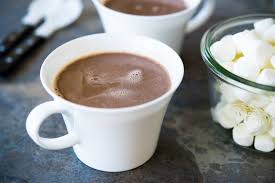Microwave
Physics
Often, hot cocoa is made by
heating either milk or water in a microwave oven. This is because
it's quick and heat up the liquid fairly well. But how does a
microwave actually work? We all have them in our homes and we
use them all the time, but what actually is the physics behind
microwave ovens?
 http://thepioneerwoman.com/food-and-friends/how-to-make-hot-chocolate-mix/
http://thepioneerwoman.com/food-and-friends/how-to-make-hot-chocolate-mix/
The inside of a microwave
oven actually acts as a Faraday cage, keeping the microwave
radiation inside the oven, and reflecting the waves back inside.
This is actually also why
the window into microwave ovens have that mesh film on the inside;
the microwaves are too large to make it through the holes in the
mesh. This keeps the radiation in, but still allows us to see
the hot cocoa inside.
The actual microwaves are produced in
something called a magnetron. The magnatron consists of a
cathode in the center with an anode surrounding it. The anode
contains in it, however, small cavities called resonate cavities
where electrons become manipulated to form electron bunches.
These bunches then move at microwave frequencies and lead to
oscillations in the resonate cavities.
After that the microwaves are fed
through the waveguide into the cooking chamber to heat the
cocoa.

http://lovegrowswild.com/2015/11/homemade-hot-chocolate-mix/


